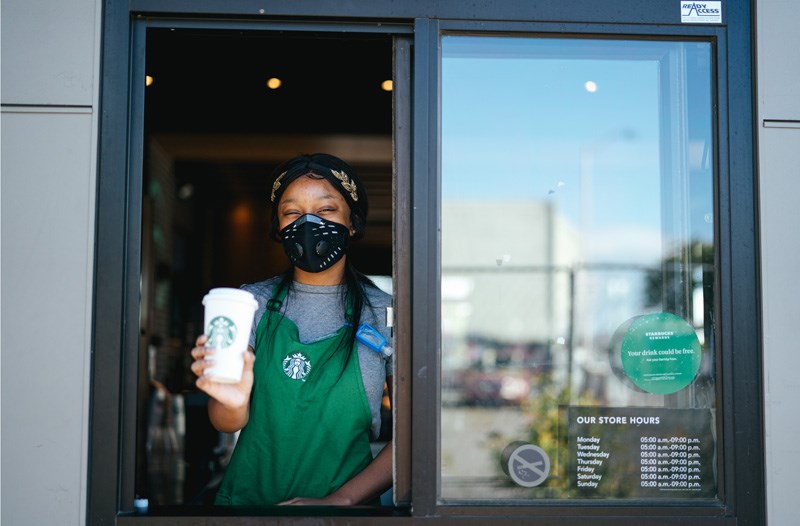Coffee giant Starbucks is making plans to re-open some stores for full-service and when it does patrons will be asked to wear masks or some sort of face covering.
In a press release Monday, Starbucks Canada laid out a multi-step process for safe social distancing for customers and employees as it gradually resumes business during the COVID-19 pandemic.
However, a key component of the re-opening plan is a request of a “facial covering” for customers and employees. It did not define what that would look like although provincial and federal health officers have recommended non-medical face masks for people on transit or places where two metres of social distancing is difficult to maintain.
According to Starbucks, the face covering request is one of a number of initiatives that will also include mandatory temperature testing of employees before their shifts, plexiglass protection at counters and gloves available but optional for employees.
Starbucks joins a number of retailers, including T & T Grocery and Whole Foods that are asking customers to wear face masks.
“Starbucks is respectfully requesting customers follow physical distancing and safety protocols recommended by public health officials, including wearing a facial covering when visiting stores as an added layer of protection for customers and partners (employees).”
Starbuck Canada is on track to resume operations in 65% of its stores by the end of this week and 85% of its stores by the end of May.
Among its re-opening efforts include three hours of comprehensive training for employees and enhanced cleaning.
As for what stores will re-open, Starbucks Canada says on its website it will decide based on a “data-rich dashboard” of comprehensive information, including store format details, government data on confirmed cases and trends about COVID-19.
“As the ability to test for COVID-19 increases, we’ll be able to continuously enhance our monitoring capabilities,” the company states.



